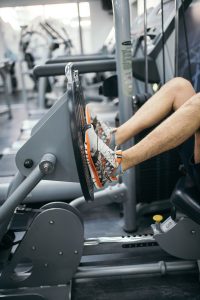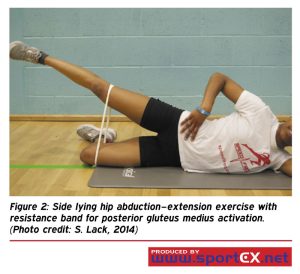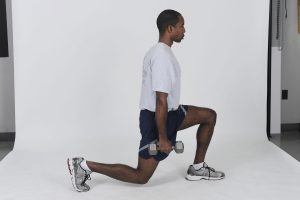11.4 Comparing and Contrasting Types of Dynamic Resistance Exercise and Equipment
Free weights force the user to control the weight throughout the range of motion and are truer to real-life situations. However, free weights require more focus on proper form to prevent injury. A partner can provide assistance and can help correct form if needed; this is also known as spotting.

Weight machines don’t require a partner for spotting and typically provide back support. They allow easy isolation of muscles and provide variable resistance throughout the muscle’s range of motion. However, their availability is typically limited to the gym.

Resistance bands are rubber tubes or bands that allow for variable resistance depending on the type of band and the tension set by the individual.

Body weight activities like squats, lunges, tricep dips, and pushups also count as resistance training and can be done with no equipment or supplemented by equipment.

A muscular strength and endurance routine can involve a combination of both dynamic and static exercises, as well as combinations of equipment or no equipment. Activities that count toward muscular strength and endurance recommendations include:
- Picking up or pushing heavy things
- Using playground equipment or a bench to do bodyweight exercises
- Using kettlebells
- Using a medicine ball
- Carrying kids on a hike
- Doing yoga or pilates
- Using a TRX suspension system
- Rock climbing outdoors or at a climbing gym
Self-Assess Your Understanding
- Describe various activities that can contribute to muscular strength and endurance.
rubber tubes or bands that allow for variable resistance depending on the type of band and the tension set by the individual.

